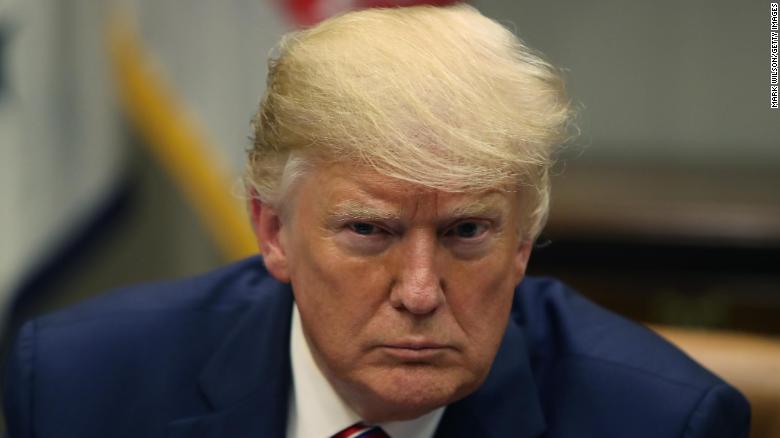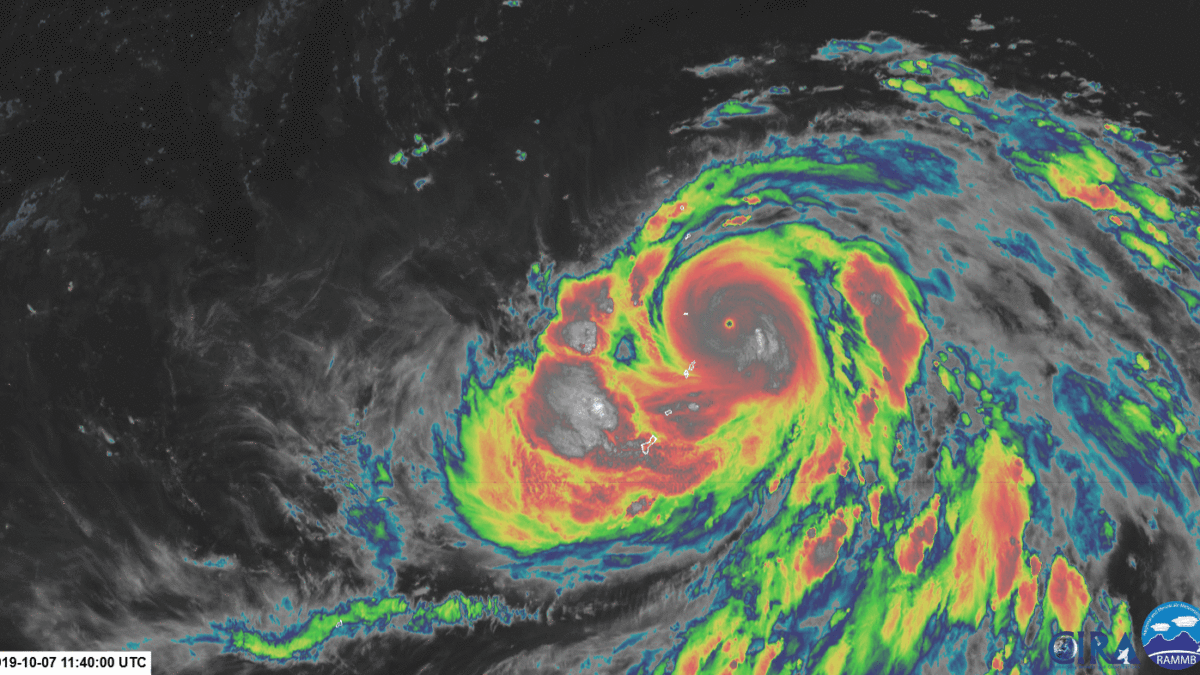Trump directs agencies to cut science advisory boards by “at least” one-third – “It’s no longer death by a thousand cuts. It’s taking a knife to the jugular.”

By Miranda Green and Rebecca Beitsch
14 June 19
(The Hill) – President Trump is directing all agencies to cut their advisory boards by “at least” one third.
The executive order issued Friday evening directs all federal agencies to “evaluate the need” for each of their current advisory committees.
The order gives agencies until 30 September 2019 to terminate, at a minimum, one-third of their committees.
Committees that qualify for the chopping block include those that have completed their objective, had their work taken up by other panels or where the subject matter has “become obsolete.”
Another defining factor listed includes whether the agency itself has determined that the cost of operating the agency is “excessive in relation to the benefits to the Federal Government.”
Critics say the order is another administration attack on experts who provide scientific advice.
“For the past two years they have been shrinking and restricting the role of federal science advisory committees,” Gretchen Goldman, the research director with the Center for Science and Democracy at the Union of Concerned Scientists, said in a statement. “Now they’re removing the possibility of even making decisions based on robust science advice. It’s no longer death by a thousand cuts. It’s taking a knife to the jugular.”
There are an average of 1,000 advisory committees with more than 60,000 members, according to data from the U.S. General Services Administration (GSA), that cover a range of topics including disposal of high-level nuclear waste, the depletion of atmospheric ozone, addressing AIDS and improving schools.
They are often filled by people considered to be at the top of their fields who can provide important technical advice, and GSA said the boards and committees “have played an important role in shaping programs and policies of the federal government from the earliest days of the Republic.”
For the past two years they have been shrinking and restricting the role of federal science advisory committees. Now they’re removing the possibility of even making decisions based on robust science advice. It’s no longer death by a thousand cuts. It’s taking a knife to the jugular.
Gretchen Goldman, Union of Concerned Scientists
Friday’s order is the most dramatic step in the Trump administration’s escalating pushback to the advisory committees.
Previously, science advisory boards in particular under the Environmental Protection Agency (EPA) and Interior Department have faced numerous instances of resistance and position cuts.
Former EPA head Scott Pruitt in October 2017 issued a directive that barred scientists who received federal grants for studies from also sitting on advisory boards and committees, arguing it was a conflict of interest.
The move was widely viewed as a way to tilt the voices represented on the boards, increasing the number of members who came from industry groups.
“It’s clearly a political maneuver to change the composition of these advisory committees,” Genna Reed, lead science and policy analyst with the Union of Concerned Scientists, recently told The Hill after the EPA’s Science Advisory Board meeting. […]
Despite the actions, viewed as a muzzling of science by critics, many science advisory boards continued to make critical requests and recommendations. In May 2018, EPA’s Science Advisory Board, recommended a review of the agency’s decision to roll back a controversial Obama-era policy on auto emissions. […]
The White House did not immediately return a request for comment. [more]
Trump directs agencies to cut advisory boards by ‘at least’ one-third
The Trump administration’s hostility toward independent expert advice spirals out of control

By Genna Reed
15 June 2019
(UCS) – Since day one, the Trump Administration has been actively ignoring its own scientists, external experts, and seeking advice from the wrong people. Now, President Trump has further waged war on expert advice by ordering the federal government to rid itself of one-third of its 1,057 advisory committees, getting down to a maximum of 350 advisory committees before September 30th.
Take a minute to process that. Over the course of a little over three months, all agencies will have to arbitrarily decide to get rid of panels that have historically provided valuable advice on a range of issues, not just on scientific matters. The Trump Administration dropped this order on a Friday afternoon in a clear attempt to remain under the radar but this utterly inane policy needs to be called out for what it is: pure dreck. Here’s why:
It’s completely arbitrary
In line with many of the policy decisions that have come from this administration, this order is 100% arbitrary. It appears to be taking a hatchet to the federal advisory system not because there’s a need to cut costs but simply because it can.
Perhaps the best example of this in this order is the maximum number of committees for the government. Why one-third of advisory committees? Why this 350 number? Did President Trump pull this number out of a hat? Does he like the way the number looks or sounds? Your guess is as good as mine.
It escalates a pattern of abandoning science advice
Next, the order requires that agencies terminate committees for which the mission is complete, the work is now obsolete or replaced by another body, or in which the costs outweigh the benefits. What the order of course fails to mention is that agencies already do annual reporting and make decisions about whether a committee’s job is done. The thing is—a good portion of federal advisory committees focus on perennial issues for which there will almost always certainly be a need for expert advice, from animal health to transit safety. How exactly are agencies expected to count the largely unquantifiable benefits of these committees? This is made even more ridiculous when you consider that many advisory committees have been failing to meet and to do the work that’s included in their charters since the Trump administration began. Perhaps the administration was playing the long game, first neglecting its advisors and then moving into phase two of its master plan to use the neglect as a data point to remove the committees altogether.
It’s bad math
The numbers don’t add up. This order does not apply to committees that are authorized by statute or created by presidential order, but does apply to those that are authorized by law (but not required) or were created by agency discretion. This means that the EPA’s Science Advisory Board and Clean Air Scientific Advisory Committee are theoretically excluded. However, according to the Federal Advisory Committee Act (FACA) database, in 2018 there were almost 600 committees authorized by statute and 425 authorized by law or through agency authority.
It seems like no one devising this scheme even took a look at the data that exists on federal advisory committees because if they did, they would know that the one-third rule and getting to 350 committees that aren’t statutorily required doesn’t work with the current exclusions. Then again, this administration cares little for actual data and facts so it’s not surprising it failed to consult experts as this executive order was drafted.
It’s not equitable
This order will hit the agencies with the most advisory committees hardest because they will be faced with the burden of doing cost/benefit analyses and making impossible-to-make decisions about which committees to cut. For example, the US Department of Health and Human Services has 50 grant review panels, so those would be theoretically exempted from this order, but they also have 93 scientific panels including 27 different Boards of Scientific Counselors for a range of public health issues, from drug abuse to occupational health.
How exactly should HHS prioritize some issues that are deserving of independent science advice and others that are not? This is a choice they shouldn’t have to make.
It has a carve-out for private industry
The other exemption in the order is for committees “whose primary purpose is to provide scientific expertise to support agencies making decisions related to the safety or efficacy of products to be marketed to American consumers.” In other words, committees that determine drug or other product safety and are essential in getting products to market in a timely fashion, are considered beneficial enough to keep around but committees that serve other functions could face the chopping block. The administration is choosing to protect committees that help expedite profits of private industry and dole out research money, but spares the committees that provide advice on other government decisions.
If not thousands of experts, then who?
Perhaps the most disturbing thing about this proposal is that the result of shedding thousands of independent experts on 700 advisory committees will be that the Administration will seek advice from individuals that have no business consulting the government (case in point: Myron Ebell) or no one at all to help policymakers make decisions on complex issues.
This is not just an affront to science, because these advisory committees advise on more than just science issues. This is an attack on the way that facts and verified information feed into our government. Its very premise threatens our democracy. We will fight it tooth and nail.
The Trump Administration’s Hostility Toward Independent Expert Advice Spirals Out of Control


